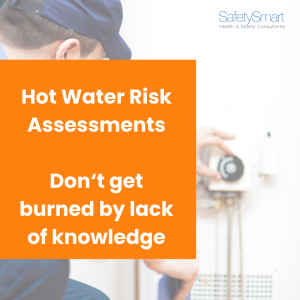Fatigue at work – the hidden cost of long hours
4th April 2022 Posted in Blogs

We all know that getting enough rest is key to productivity, good mental health and work-life balance but that doesn’t mean we always get the rest we need or the balance we crave and in some industries, it’s reported that long hours are much more commonplace than we might think…
IOSH has recently reported dangerous levels of fatigue in the TV and film industry which has been brought to the attention of the world with the high profile incident in October 2021 where cinematographer Halyna Hutchins was killed on the set of the film Rust after a gun discharged with a live round. The Los Angeles Times reported that members of the crew had earlier walked out in protest against working conditions, including long hours and safety protocols (James and Kaufman, 2019). The tragedy exemplifies the dangers of working in an industry where fatigue and high pressure are endemic.
The term ‘burnout’ was given official status as an occupational syndrome by the World Health Organization in 2019, and stems from chronic workplace stress that has not been managed successfully (WHO, 2019). ‘Typically, it features feelings of energy depletion or exhaustion, negativism or cynicism related to one’s job and reduced professional efficacy,’ the WHO said.
The film and TV industry is not alone in facing these challenges, poor conditions are found across industries including hospitality, music, catering, truck driving and construction subcontracting and it’s not a new issue either, some of the most high profile accidents in history including the Challenger space shuttle accident, Chernobyl nuclear disaster and more recently the Deepwater Horizon oil spill all found that fatigue contributed to the incidents.
Who does this affect?
It is noted in the report that many of the issues related to industries whereby workers are self-employed, contract or shift workers often with poorly designed working hours or arrangements that do not balance the demands of work with time for rest and recovery leading to fatigue, accidents and ill health.
Fatigue refers to the issues that arise from excessive working time or poorly designed shift patterns. It is generally considered to be a decline in mental and/or physical performance that results from prolonged exertion, sleep loss and/or disruption of the internal clock. It is also related to workload, in that workers are more easily fatigued if their work is machine-paced, complex or monotonous.
Fatigue results in slower reactions, reduced ability to process information, memory lapses, absent-mindedness, decreased awareness, lack of attention, underestimation of risk, reduced coordination etc. Fatigue can lead to errors and accidents, ill-health and injury, and reduced productivity.
Fatigue has also been implicated in 20% of accidents on major roads and is said to cost the UK £115 – £240 million per year in terms of work accidents alone.
What can employers do?
Employers are legally required to manage fatigue under the Health and Safety at Work Act and should be treated like any other hazard. Many organisations may think compliance with the Working Time Regulations is sufficient in managing fatigue risks – this is not the case, the legal duty is on employers to manage risks from fatigue regardless of the individual or employees’ willingness to partake in the additional working hours.
Practical steps to take include:
- Risk assessments on changes to working hours, taking into consideration that whilst employees may prefer a particular shift pattern it is not necessarily the healthiest and should be assessed to identify the risk of accident, injury or illness.
- Employees should be consulted on working hours and shift patterns, taking into consideration what is safest over personal preference.
- Policies should be put in place which impose and address set limits on working hours, overtime, shift swapping and other practices which promote long working hours and which do not protect against fatigue.
- There should also be provision for monitoring and enforcing the policy which could include recording and reviewing working hours in line with employee wellbeing.
- Employers should pay particular attention to staffing levels and resource which contribute directly to other employees working longer hours whether by choice or necessity.
- The risk factors in shift scheduling and design must be considered including workload, the type of work, shift timing, duration, rotation and the number and length of breaks. Other factors to be considered are the physical environment, management issues and employee welfare.
- Employers should consult with employees regarding sleep, whilst you cannot regulate the sleep an employee is getting outside of the workplace day time sleep is often lighter, shorter and more easily disturbed putting night workers in particular at risk of fatigue. Consult with your employees about sleep quality and how you can support them with this if possible.
Need more guidance on supporting your employees against fatigue, we can help get in touch today for a free consultation.
Sources
https://www.ioshmagazine.com/2022/03/02/fatigue-tv-and-film-industry
Request A Call!
Want a free no-obligation consultation? Fill in the form below and we'll give you a call!



